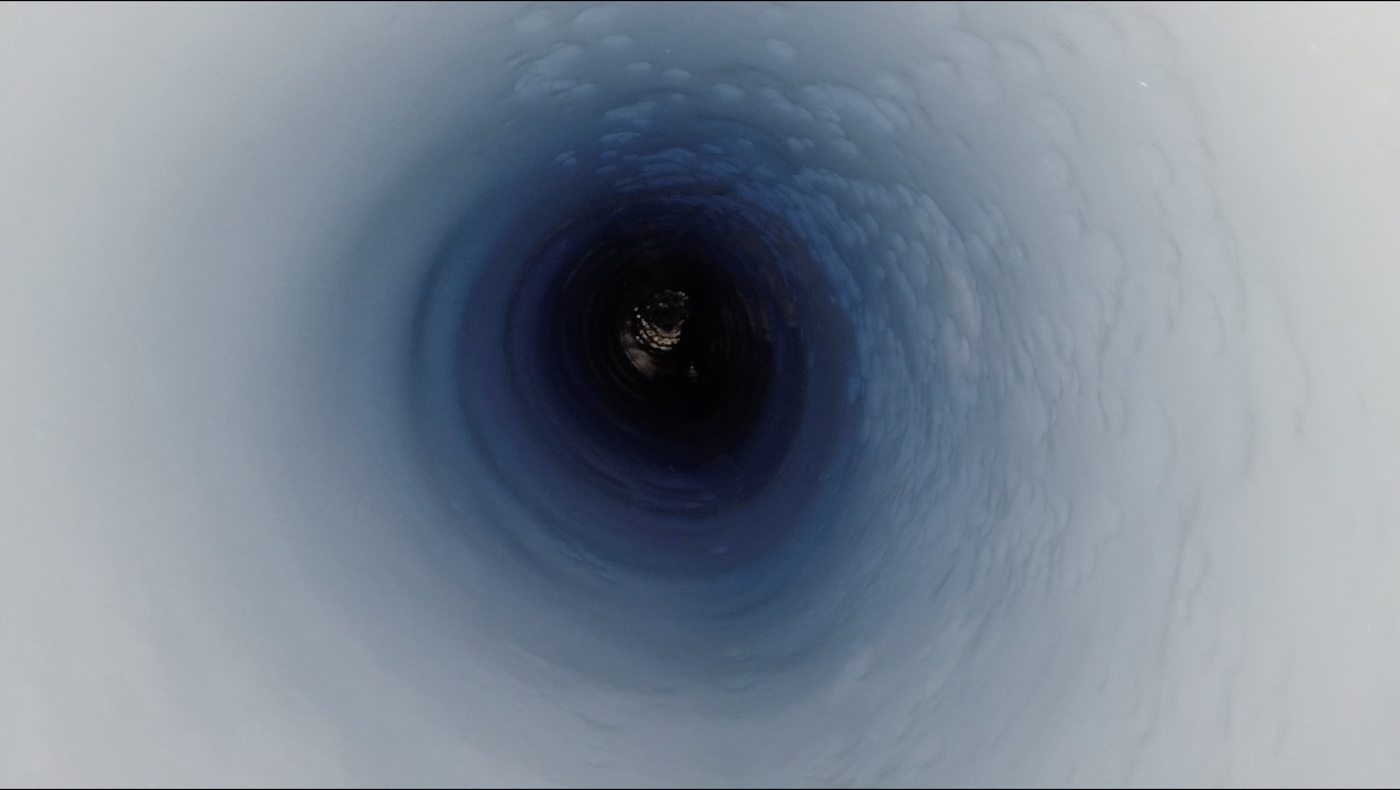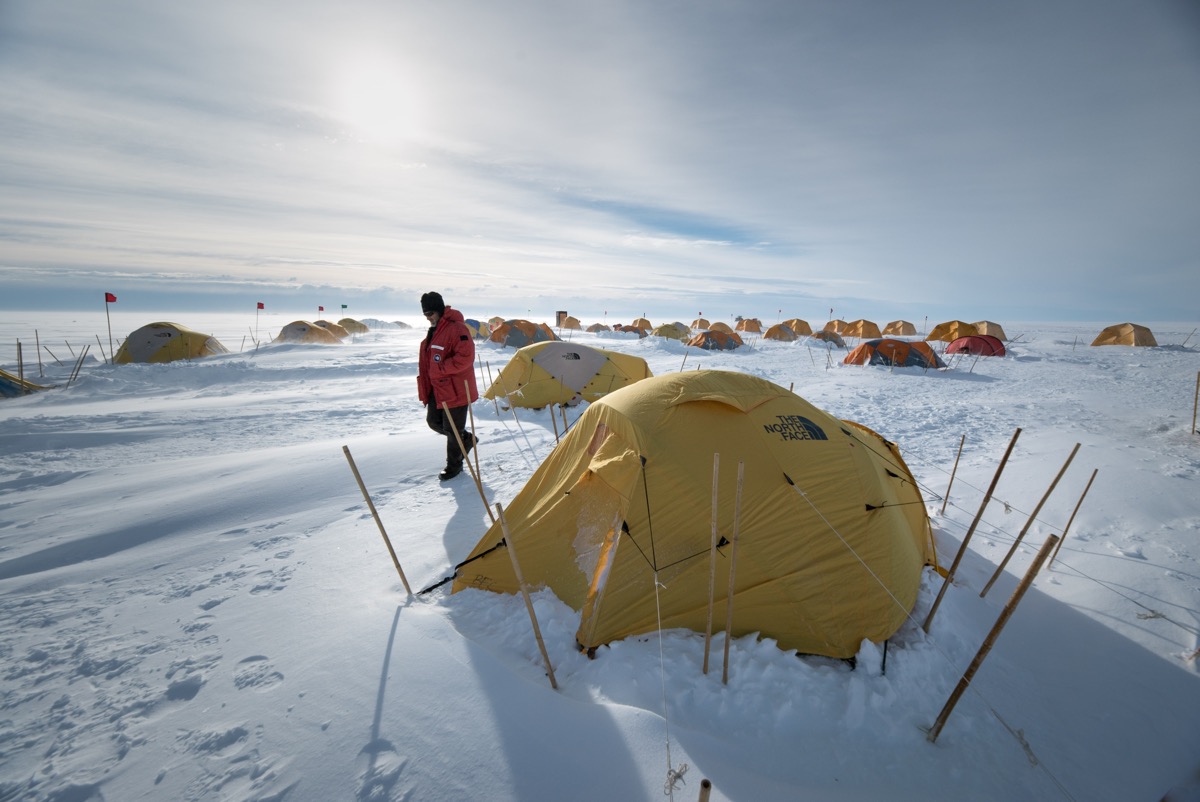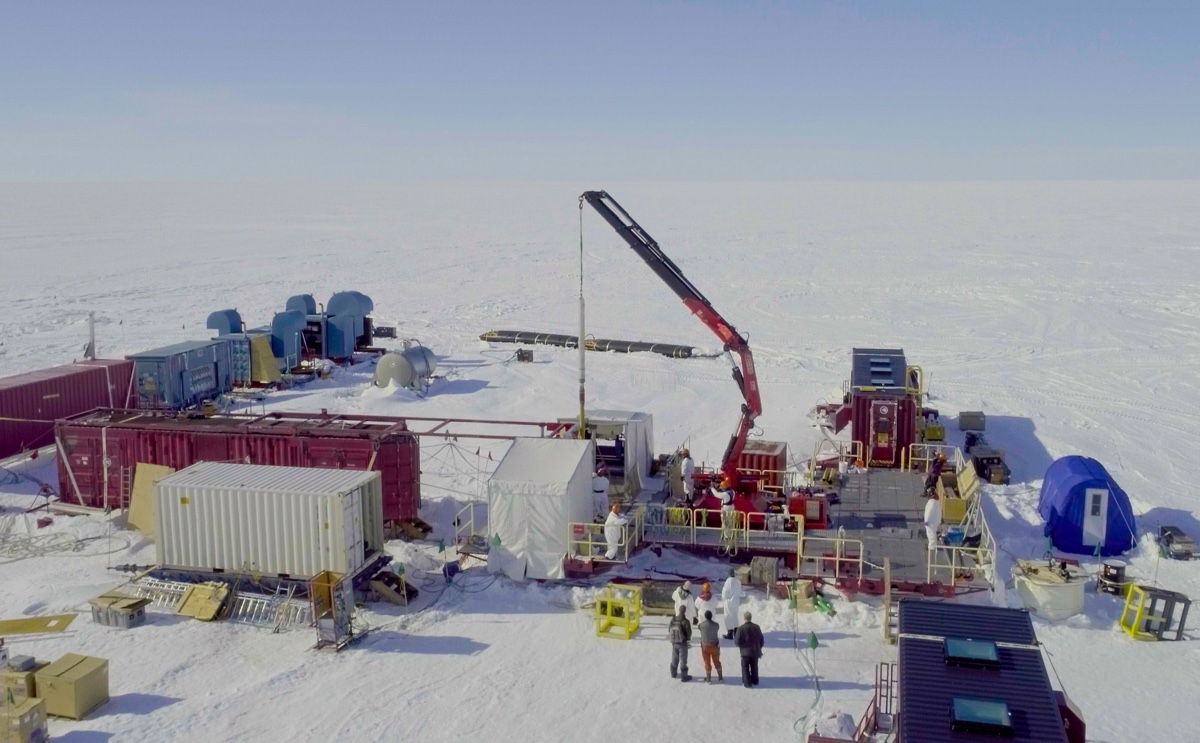Hidden Beneath a Half Mile of Ice, Antarctic Lake Teems with Life

The dark waters of a lake deep beneath the West Antarctic ice sheet and a few hundred miles from the South Pole are teeming with bacterial life, say scientists — despite it being one of the most extreme environments on Earth.
The discovery has implications for the search for life on other planets — in particular on the planet Mars, where signs of a buried lake of liquid saltwater were seen in data reported last year by the European Space Agency's orbiting Mars Express spacecraft.
Expedition leader John Priscu, a professor of polar ecology at the University of Montana, told Live Science in a telephone interview from Antarctica this week that early studies of water samples taken from Lake Mercer — which is buried beneath a glacier — showed that they contained approximately 10,000 bacterial cells per milliliter.
That's only about 1 percent of the 1 million microbial cells per milliliter typically found in the open ocean, but a very high level for a sunless body of water buried deep beneath an Antarctic glacier.
Priscu said that the high levels of bacterial life in the dark and deeply buried lake were signs that it might support higher life-forms, such as microscopic animals like tardigrades. [See Photos of Expedition to Subglacial Lake Mercer]
"We saw lots of bacteria — and the [lake] system has enough organic matter, you would think, to support higher life-forms." Priscu said. "We are really going to get a good look for higher organisms, like animals … but that won't be done for another couple of months."
The abundance of bacterial life in Lake Mercer complements the discovery of high levels of bacterial life in Antarctica's nearby subglacial Lake Whillans in 2013 — an expedition that was also led by Priscu.
Sign up for the Live Science daily newsletter now
Get the world’s most fascinating discoveries delivered straight to your inbox.
Scientists theorize that the bacteria in Lake Whillans — and possibly Lake Mercer — are surviving on deposits of carbon laid down by photosynthesizing organisms between 5000 and 10,000 years ago, when the buried lakes may have been connected to the open ocean.
Deep, dark lake
The 25-member expedition to subglacial Lake Mercer flew back to the U.S. Antarctic base at McMurdo Station last week from their camp on the West Antarctic ice sheet, about 370 miles (600 kilometers) from the South Pole.
The buried lake covers an area of about 54 square miles (139 square kilometers) under the ice sheet.

During their stay on the ice from mid-December last year, the expedition team used drills and hot water to open a borehole from their camp at the frozen surface down to the buried lake of liquid water.
Priscu said that the drill team bored through about 3,504 feet (1,068 meters) of ice, and the water below was a chilly 30.8 degrees Fahrenheit (minus 0.65 degrees Celsius), so that scientific researchers could take water samples and sediment cores from the lake, which was about 49 feet (15 m) deep at that spot.
The borehole in the ice was kept open for about 10 days, and the scientific sampling tasks were stopped twice while it was widened with hot water, he said. [Antarctica Photos: Meltwater Lake Hidden Beneath the Ice]
The expedition returned to McMurdo Station last week with more than 15 gallons (60 liters) of water from the buried lake and a sediment core measuring more than 16 feet (5 m) in length — the deepest sediment core ever taken beneath the West Antarctic ice sheet, Priscu said.
Frozen wetlands
Priscu hopes that lab studies of the sediment cores, in particular, will help scientists learn more about the activity of the West Antarctic ice sheet for the past tens of thousands of years, "when it was last ice-free, and things of that nature," Priscu said.

The team had also lowered a specialized remotely operated underwater vehicle (ROV) into the dark waters of the buried lake, as well as several cameras, which they used to take images and make video of the lake floor, he said.
Priscu believes that the more than 400 buried liquid-water lakes across the frozen continent of Antarctica form a unique ecosystem of liquid water, sandwiched beneath the thick ice shelf and the frozen rocks of the Antarctic continental crust.
"I've been proposing that the entire ice sheet is a big wetland, with rivers and lakes — and some of the rivers, they span an area the size of the Amazon, though with not as much water," he said.
"Here you've got 70 percent of the world's freshwater — it just doesn't make sense that there is no life under there. And now we've proven that there is, we have transformed that view," Priscu said.
Priscu also thinks that any life below the frozen surface of the planet Mars might follow the patterns seen in Antarctica's subglacial lakes.
"The new knowledge that our research has provided on subglacial environments, particularly the fact that they harbor a diverse microbial assemblage, will provide us with information on the type of life that may have existed on Mars" he said. "This is particularly important for Mars 2020, which will be taking shallow cores from the planet's surface."
Future expeditions to Antarctica's buried liquid-water lakes are likely to focus on the largest bodies of buried liquid water — like Lake Vostok in East Antarctica, although any expedition to that region would face severe challenges, Priscu said.
"Vostok is 1,000 meters (3,280 feet) deep and under 4,000 meters (13,123 feet) of ice, so that would be a heck of a challenge. And it is also up at 4,000 meters altitude to work at," he said. "So that would be a tough one."
- Extreme Antarctica: Amazing Photos of Lake Ellsworth
- Cold, Dark and Alive! Life Discovered in Buried Antarctic Lake
- The 10 Strangest Places Where Life Is Found on Earth
Originally published on Live Science.
Tom Metcalfe is a freelance journalist and regular Live Science contributor who is based in London in the United Kingdom. Tom writes mainly about science, space, archaeology, the Earth and the oceans. He has also written for the BBC, NBC News, National Geographic, Scientific American, Air & Space, and many others.









